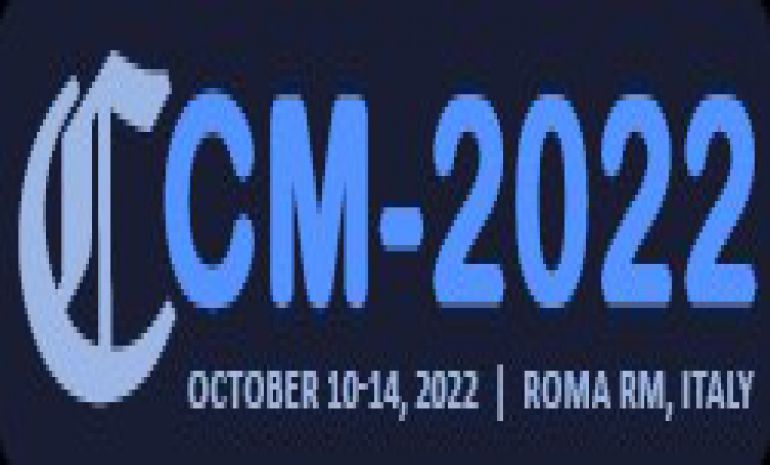- Bulgaria-Italy-Spain supercapacitors



Activated carbons as electrode material for use in supercapacitors
A.Stoyanova, A.Arinalis, N. Ray, B. Karamanova, S. Veleva, L. Soserov, B. Mladenova, T. Stankulov
Lately, Supercapacitors rapidly have attracted a growing attention as an energy storage device due to their unique properties, such as a long cycle life, and high power density. However, there are still some challenges and obstacles in these systems such as relatively inadequate energy density and high manufacturing cost. Basically, the performances of the supercapacitors are determined by the structural and electrochemical electrode properties. Activated carbon is one of the most versatile materials for this application due to the desirable pore sizes and their higher specific surface area as compared to the other carbonaceous material.
The present study reveals the capacity characteristics of different activated carbons - carbon xerogels synthesized by different techniques and under different conditions as well as YP-50F (commercial product, Kuraray Europe GmbH), in symmetric and hybrid supercapacitors using aqueous and organic electrolytes. The structure, morphology and porous texture properties of electrodes materials are analyzed by means of various physiochemical methods and their electrochemical performances are determined by cyclic voltammetry, galvanostatic charge/discharge as well as long-term tests.
The effect of the carbon microstructure and functional groups related to it, as well as the influence of the electrolyte type on the obtained supercapacitor performances, are discussed in detail. The capacitance characteristics of electrodes based on activated carbon composite combined with metal oxides/hydroxides are also considered. The obtained data can serve as a basis for the development of more efficient electrode materials in energy storage systems.
Characterization of different types of carbons for energy storage applications
M. Matrakova, A. Aleksandrova, B. Mladenova, S. Veleva, L. Soserov, S. Uzunova, A. Stoyanova
Modern industry, technology and everyday life are constantly in need of reliable energy sources, portable in many applications, cheap and, last but not least, less polluting for the environment. Many researches have been focusing on the usage of different types of carbons as electrode material for electrochemical energy storage. Various characteristics like purity, surface area, porosity, parti-cle size, conductivity, etc. are of critical importance for the electrochemical application of carbon materials. Production of low-cost carbon materials is essential for future development of batteries and supercapacitors.
The aim of the present study is to characterize “green” carbon material obtained from rice husks (RHC), synthetic organic carbon xerogel (CXG) and activated carbon xerogel (ACXG) as potential electrode materials or additives for supercapacitors or batteries. The specific treatment conditions have strong impact on the phase composition, microstructure, porosity, surface reactivity, conductivity etc. of the selected carbon materials and thus reflect in their specific applications.
The rice husks are a widely available and low-cost raw material and are successfully used for pro-duction of bio-fuels or products for waste water treatment and cleaning. The porous low-ash-con-tent carbonaceous material RHC sample was prepared by pyrolysis of rice husks and extraction of SiO2. First, rice husks were washed with hot water several times to remove mechanical admix-tures. The washed and dried raw material were carbonized at 450 °C and then activated with water apor at 700 °C. Finally, the solid product was treated with HF acid to remove the SiO2 and the obtained carbonaceous material sample was washed and dried.
The preparing processes of organic carbon gels are comparatively quick, simple and cheap and give potentiality to control the purity and porosity of the materials. The organic xerogel samples were synthesized by a microwave-assisted polycondensation of resorcinol and formaldehyde using de-ionized water as solvent. The process of carbonization takes place in an inert atmosphere (100 ml/min N2), heating up to1000ºC. The ACHG sample was produced by process of activation that consists of heating (50ºC / min to 1000ºC) in a reactive atmosphere (200 ml / min CO2).The samples characteristics phase composition, specific surface and porosity, microstructure and morphology of the carbonaceous materials was investigated by X-ray diffraction analysis, surface area measurements (BET method) and scanning electron microscopy.
Investigation of Different Types of Carbons as Additives in Electrode Materials for Energy Storage Applications
M. Matrakova, A. Aleksandrova, S.Veleva, L. Soserov, N. Rey-Raap, A. Arenillas, A. Stoyanova
The aim of the present study is to investigate the applicability of low-ash-content porous carbona-ceous “green” material obtained from rice husks (RHC) or of carbon xerogel (CXG) as additives to the negative electrodes of lead batteries (LBs). For comparison, a commercially available product, carbon black PBX®51 (Cabot Corp., USA), widely used in the lead battery technology, was also used in our study. The use of carbon additives in the negative active mass (NAM) suppresses their progressive sulfation during high rate partial state of charge (HRPSoC) cycling (specific for HEV).
The RHC sample was prepared by pyrolysis of rice husks and extraction of SiO2. The CXG sam-ple was synthesized by polycondensation of resorcinol and formaldehyde using deionized water as solvent. The control material carbon black PBX51was prepared employing a method known as decomposition of hydrocarbons feedstock at high temperature (1000-1500°C). The different types of studied carbons, their specific surface area and loading concentrations in the negative electrodes of test lead cells are summarized in the table below.
Carbon type Specific surface area, m2g-1 Loading, %;Rice husks carbon (RHC) 610 0.50;Carbon xerogel (CXG) 1050 0.25;Carbon black PBX51 1400 0.50
Small-sized laboratory lead test cells comprising one negative and two positive plates per cell were assembled for capacity and cycle life tests. The obtained results show that carbon materials used as additives in NAM have beneficial effect on the discharge capacity of lead cells and improve the cycleability of the cells under HRPSoC conditions compared to the Blank cell (w/o carbon addi-tive). These results demonstrate that the tested carbon materials are promising for use as negative electrode additives for energy storage applications